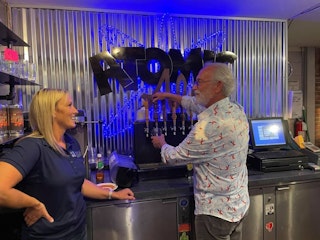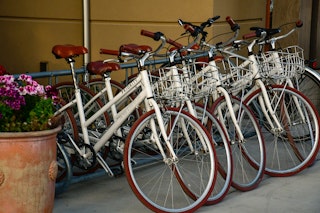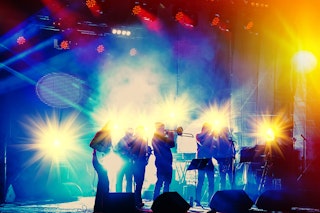A Clean Energy Hub
By Ellee Thalheimer
Tri-Cities has become a hub for clean energy production and technology, thanks in part to a vibrant scientific community.
Visitors interested in energy technology, climate science, and sustainability will find a lot to dig into here. The roots of scientific research run deep—Hanford nuclear plant was one of the three Manhattan Project sites in the United States and produced the first full-scale plutonium production reactor in the world in 1944, leaving a complex legacy. Today, eco-conscious travelers may appreciate that the area is a genesis for solar, hydro, wind, and nuclear power generation and innovation, with thousands of people working in energy-related fields and around 14 companies focusing on renewable technologies. The region aims to lead the nation in cutting-edge initiatives for net-zero emissions energy sources. That’s huge, considering 40% of Washington’s power originates within a 100-mile radius of Tri-Cities.
Solar
Just north of Richland, photovoltaic panels from the Horn Rapids Solar Project cover acres of land, soak in abundant sun, and provide enough energy to power about 600 Richland homes. This Energy Northwest facility also has an onsite battery storage system that makes the solar resource predictable and generative. This model of operation draws solar and battery technicians from across the country and serves as a training ground.
Hydropower
The hydroelectricity from the Columbia River System and Lower Snake River dams allow the utilities serving Tri-Cities to be more than 90% carbon-free. Beyond being a clean energy source, hydropower is reliable and economical. Many people see it as being partially responsible for the clean air, water, and land across the Pacific Northwest.
Wind
Along the windiest ridges southeast of Kennewick, 63 turbines of the Nine Canyon Wind Project capture power from the area’s natural air flow. An electrical substation on the site transfers the generated electricity into the existing Bonneville Power Administration transmission system for distribution.
Nuclear
Just north of Richland is the Pacific Northwest’s only commercial nuclear power plant, the Columbia Generating Station operated by Energy Northwest. Nuclear energy is the largest source of clean electricity in the country, generating more than half of all carbon-free electricity. The Columbia Generating Station is the third largest electricity generator in Washington. By the end of 2030, Energy Northwest aspires to provide power for all of Eastern Washington from a small nuclear reactor.
Biofuel
Due to a $3 million federal grant, a biodiesel storage and distribution hub will be completed in Pasco by 2024. Biodiesel—created from feedstocks that include soybean oil, animal fats, and used cooking oil—produces lower levels of carbon emissions and pollution compared to petroleum-based fuels. The Pasco facility will provide rural agricultural communities in the Pacific Northwest with more than 12 million gallons of renewable fuel per year.
To support all these initiatives and spur the industry forward, the Tri-City Development Council launched the Energy Forward Alliance, a nonprofit that bolsters organizational partnerships and leadership in the clean energy sector. Local research institutions also drive development. Washington State University Tri-Cities, in Richland, founded the Institute for Northwest Energy Futures, a new research center that develops affordable low-carbon energy sources. Down the road, Richland’s Pacific Northwest National Laboratory employs around 4,200 people and researches sustainable energy technology, like smart grid applications, energy storage, and fuel cell development.
These endeavors and others like them will only build momentum: Governor Jay Inslee signed a bill to have 100% clean electricity for Washington state by 2045, and the Department of Energy recently announced plans to lease 19,000 unused acres at the Hanford nuclear reservation site for clean energy production through solar, wind, or nuclear strategies.
































